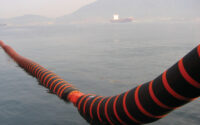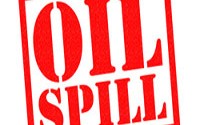What Are Marine Breakaway Couplings?
A Marine Breakaway Coupling (MBC) is an essential safety feature used during the transfer of fluids in an offshore environment, whether it be for loading or discharging a vessel. The basic idea is that should the fluid hose come under untoward and unexpected tension, or experience a sudden surge in excess pressure, the marine breakaway couplings will act as a cut-out or breaker separating the coupling and shutting down fluid flow before the hose can break or rupture. This breakaway greatly reduces the risk of product spillage, which can be of vital importance for both safety and environmental reasons depending on the fluid being transferred.
Why are Marine Breakaway Couplings So Useful?
By their nature, events which put the transfer of fluids between a tanker and an installation at risk are unpredictable and can occur with dramatic speed. An MBC is a fully automatic device that will come into activation the moment a pre-determined parting load is reached, with no intervention needed by either an operator or other outside systems. Without an MBC in place, the pressures involved in a typical transfer can make getting a ruptured hose under control a difficult business. The MBC’s reduction of spillage also makes clean-up easier and keeps downtime to a minimum, as well as providing vital protection against workforce injury and hardware / asset damage. MBCs also do not require on external power for their operation, making them a reliable and self-contained safety feature.
When are Marine Breakaway Couplings Used?
By far the most common application for marine breakaway couplings is in the offshore oil industry, as a layer of protection when loading crude oil or processed products onto a tanker at sea, or discharging a vessel at port. They are suitable for any situation where fluids are transferred in bulk and under pressure, and where the results of a spillage would be severe and need to be kept to an absolute minimum.
What Types of MBC are Available?
There are several different variations on the basic MBC theme, suitable for different applications. The two main kinds, both of which can be supplied by Gail Thomson are:
The Petal Valve Type MBC – Designed with a full bore making it the best choice for higher viscosity liquids such as crude oil. Among the advantages this type of MBC offers is the fact that it is fully Piggable and has zero headloss.
Flip-Flap Type MBCs – Offering low headloss and 100% shut-off, and is ideally suited for lower viscosity fluids including kerosene and Liquid Petroleum Gas (LPG).
Gail Thomson have been leaders in MBC research and production for 35 years, evolving their designs by analysing real world operational data, and refining the manufacturing processes to result in a lightweight and efficient product with proven reliability and effectiveness.


